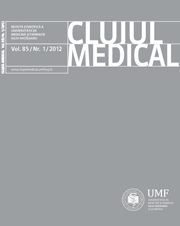Contributions to the history of the medical establishment “Madona Dudu” from Craiova
Keywords:
treatment, psychiatry, Craiova, Madona Dudu, asylumAbstract
This study presents the evolution of the asylum “Madona Dudu” from Craiova from the point of view of its location, medical staff and the methods of treatment used.
From 1851 to 1858, permanent shelter started to be given to three or four alienated persons in the dilapidated hermitage rooms of the “Madona Dudu” church of Craiova .
In 1860, following the knocking down of these hermitage rooms, two rooms and a kitchen were built near the church in order to offer treatment to no more than eight sick people. In time, the number of rooms increased, and so did the number of beds, which reached 20. Until 1865 all kinds of sick people had been received: pellagrasuffering people, epileptics, operated people and alienated people. Starting with 1860, the asylum benefited from highly-qualified medical staff. Among the doctors succeeding in the management of this asylum we mention: Nicolae Hanselmann (1826-1865), George Demetriade (1814-1891), Iosif Fabricius (1830-1888) and George Mileticiu (1853-1917).
Between 1891 and 1922, the asylum “Madona Dudu” of Craiova was one of the best organized institutions offering medical assistance to the alienated in the Old Romanian Kingdom.
Downloads
Published
How to Cite
Issue
Section
License
The authors are required to transfer the copyright of the published paper to the journal. This is done by agreeing to sign the Copyright Assignment Form. Whenever the case, authors are also required to send permissions to reproduce material (such as illustrations) from the copyright holder.

The papers published in the journal are licensed under a Creative Commons Attribution-NonCommercial-NoDerivatives 4.0 International License.

